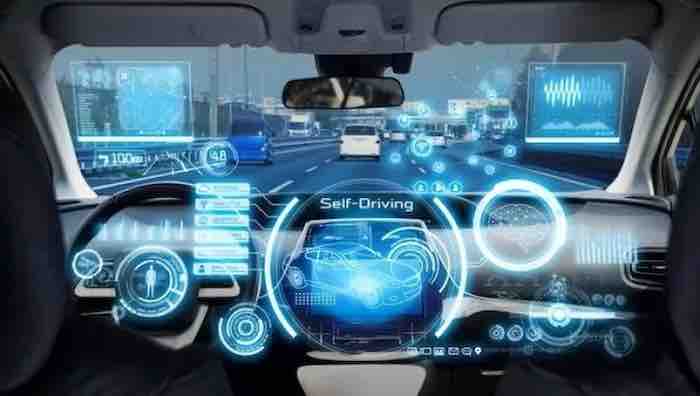Despite numerous Education and progress there is no cure for motion sickness and science says that with electric and self-driving cars it will get worse.
On the topic of motion sickness in the car. a PhD student fromUniversity of Technology of Belfort-Montbéliardhas even developed a thesis on the subject.
 Do you suffer from motion sickness? Science says that with electric and self-driving cars it will get worse, Pixabay source
Do you suffer from motion sickness? Science says that with electric and self-driving cars it will get worse, Pixabay source
Meaning of motion sickness or motion sickness
Let’s start from there is nothing o motion sicknessmore commonly known as times the car. This is a neurological disorder that some individuals experience as a result of rhythmic or irregular movements of the body during a motionfor example on a swing, on a carousel, or during travel by means of transport such as a ship, car, plane.
From the research carried out, about the 25-30% from the population suffers il mal by car. The symptoms associated with this disease are nausea, sweating, paleness, hypothermia, headache e vomit. While, people who are only slightly affected have drowsiness, apathy and decreased cognitive abilities. Finally, the 60-70% of travelers will sooner or later suffer from it.
Motion sickness, in a century of development still hasn’t been solved
Vehicles have undergone millions of improvements over the course of a century, but there is still no vehicle capable One would have thought that, in more than a century of automotive development, the problem of motion sickness should have been solved. But that is far from the case. While road vehicles continue to undergo technological metamorphoses, disruptions such as electrification, digitization and vehicle automation bring benefits, but also some problems.
In fact, some technological advances can create or worsen the feeling of imbalance and prevent the vehicle occupants from anticipating the itinerary. Consequentially, increase the risk of experiencing disease symptoms more frequently. Below are those whose effects are already documented.
Why electric vehicles don’t improve motion sickness
According to the study of doctoral studentas he writes in The Conversation, the electric motor is more linear and silent of a combustion engine. This advantage has the disadvantage that it prevents some motorists from assimilating the movement of the vehicle. For example, while in internal combustion engine cars we would associate theacceleration at engine revolutionsthe electric cars deprive us of this point of reference. I am the vibrations are gone tooi of the combustion engine, which some perceive as relaxing.
Also discover the intelligent world of Dyson for your home
Even the use of regenerative braking, which captures the kinetic energy of braking and converts it into electrical energy that charges the vehicle’s high-voltage battery, can throw passengers off balance. The decelerations induced by this system are generally low-frequency, a driving force that typically causes discomfort.
Larger screens overload pilot and passengers
The beloved ever-larger screens promote motion sickness. In this regard, the doctoral student’s study underlines that the growing presence of increasingly large screens and numerous inside the vehicles. These screens they overload users with visual information, which discourages them from looking outside. Thus they lose the ability to perceive the “correct” visual signals – i.e. the external view of the vehicle – which allow them to correctly perceive their position in space. Which, in turn, induces motion sickness.
It is likely that the increase of screens in cars increases in the coming years: there are vehicles that could even feature screens on glass surfaces or offer virtual reality experiences on board. This invasive environment can, in turn, have an impact on passenger well-being. In fact, the mere knowledge that you’re likely to get nauseous from screens can put stress on vulnerable passengers, with research linking up to 40 percent of motion sickness symptoms to passenger psychology.
 Do you suffer from motion sickness? Science says that with electric and self-driving cars it will get worse, Pixabay source
Do you suffer from motion sickness? Science says that with electric and self-driving cars it will get worse, Pixabay source
The automotive giants desperately put self-driving vehicles on the road
Another problem is the builders. These are increasingly looking to put ever more performing and fully autonomous vehicles on the market. This, again according to the study as stated in The Conversation, is likely to make the problem worse. While today’s vehicles are only partially automated, in the future they will be able to drive themselves. As mentioned above, this is problematic when we know that the act of driving is the best way to anticipate trajectories and curb symptoms.
Also, the disappearance of the cockpit it will make it possible to redesign vehicle interiors to make them more welcoming, like a living room on wheels. These new configurations will give passengers more freedom, allowing them for example to have the rear-facing seat to converse with the other occupants. However, in the collective unconscious, sitting with your back against the direction of travel is associated with the likelihood of getting sick. While research has shown that it makes no difference in forward-facing orientations, this is another idea that can constitute a psychological bias toward symptoms.
Another promise of the autonomous vehicle is that of allow its passengers to devote “idle” travel time to productive activities or entertainment. The growing appeal of taxi and Uber travel, where users tend to look at their digital devices, goes hand in hand with this trend. Also in this case, such distractions dissuade passengers from looking out the windows at the scenery.
Finally, let’s not forget that the incidence of motion sickness ultimately remains moderate in non-automated cars also thanks to the ability of drivers to adapt their driving style when passengers report discomfort. This human dimension is destined to disappear in autonomous vehicles, whose driving style will be less flexible and less natural than that of a human driver
What awaits us in the future
According to research read in The Conversation, in the absence of effective means to mitigate in-car motion sickness, aggravated symptoms can ultimately lead consumers to reject such highly evolved vehicles. Considering the ethical, psychological and legal dimensions related to their development, it is possible that humans become the main obstacle to the adoption of these new types of vehicles.
For these reasons, in recent years, car manufacturers and suppliers have shown a growing interest in this phenomenon. Their aim is to better understand it in order to effectively relieve it, not out of public interest but because it could jeopardize the successful launch of their future products.
To date, the exact causes of motion sickness are not yet clear, prompting industrial research to focus on how to limit its occurrence. Countermeasures are currently being studied. The latter include the use of visual, auditory and tactile cues to help users better perceive and anticipate vehicle movements, but also the programming a comfortable driving style that mimics that of a human and limit sudden accelerations.
















Leave a Reply
View Comments